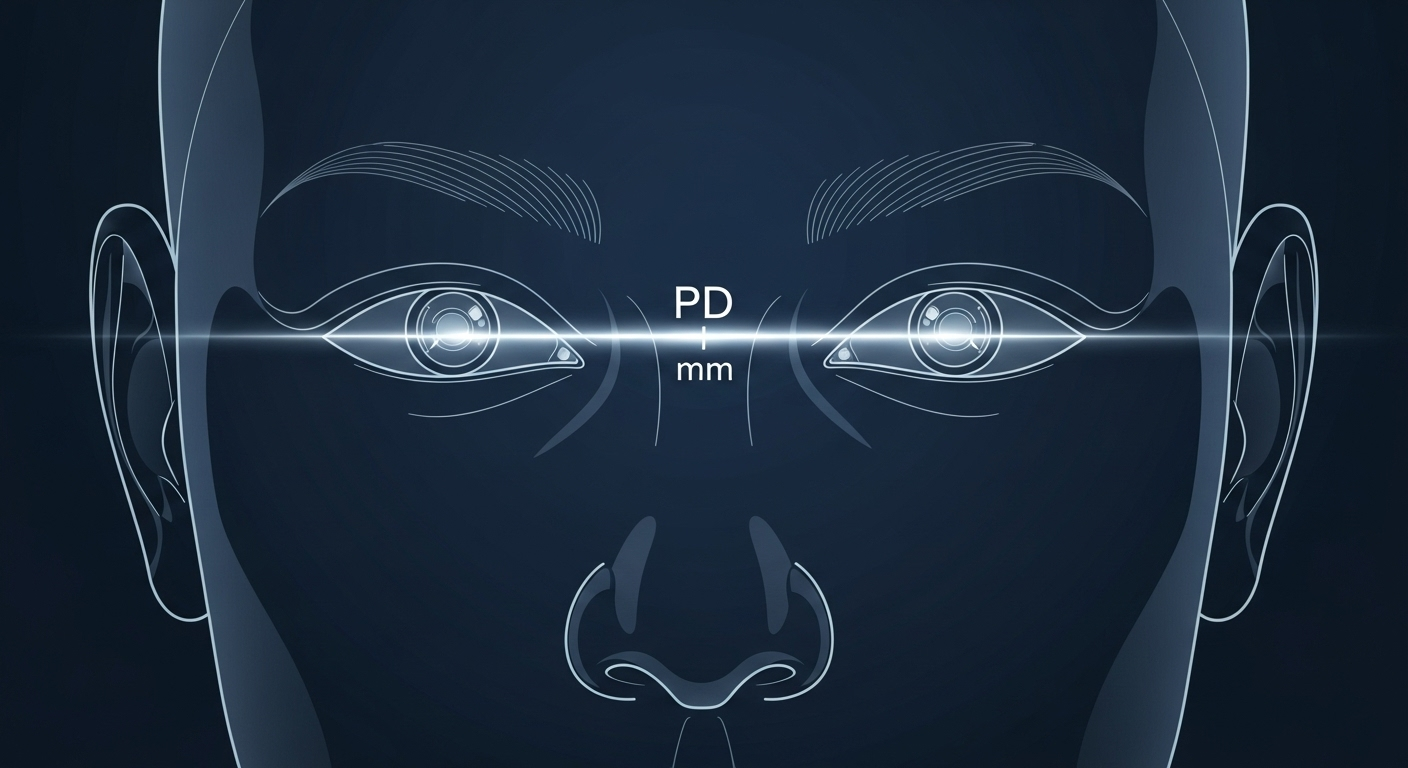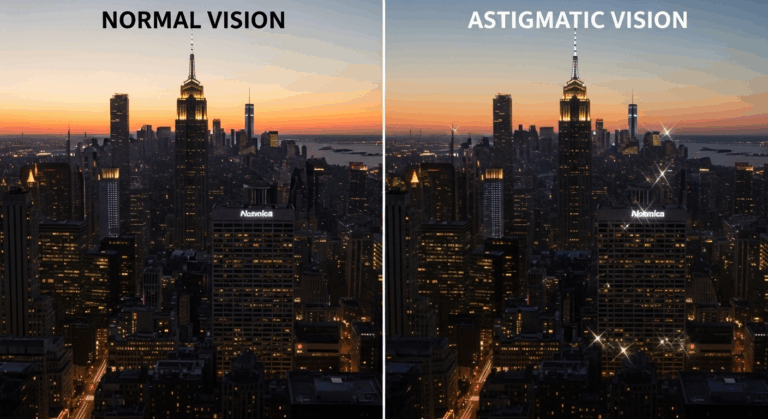If you’ve ever ordered glasses online or tried on frames that just didn’t “feel right,” the culprit is often PD — pupillary distance. Put simply, PD is the distance between the centers of your pupils. It’s the GPS coordinate that tells the lab where to place the optical centers of your lenses. Get it wrong and your vision can feel fuzzy, off-center, or give you headaches.
We get asked this all the time: “Can I measure my own PD?” The short answer: yes — with care. This guide walks you through multiple ways to measure PD (home, with a helper, and with a camera), explains monocular PD vs. binocular PD, and gives practical tips so your glasses fit and perform the way they should.
What is PD and why accurate PD matters
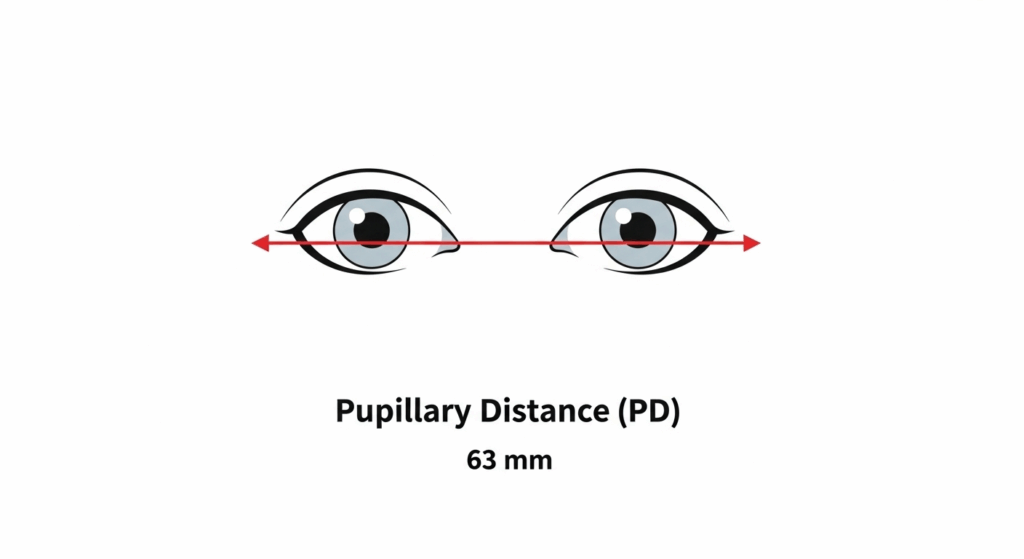
What PD (pupillary distance) actually is
PD = the horizontal distance between the centers of your pupils, measured in millimeters. Most adults fall between about 54 mm and 74 mm, but everybody’s unique.
Why precise PD matters for eyeglasses
Think of PD like lining up the sights on a rifle — if the sights aren’t aligned, your aim is off. For glasses, the optical centers must align with your pupils to give you sharp vision and avoid distortion. This is especially true for:
- Progressive or multifocal lenses
- High-add or high-prescription lenses
- Single-vision lenses where comfort and clarity are priorities
Remember: progressive lenses are unforgiving. If you’re ordering progressives, accurate monocular PD and segment heights are essential.
Tools you’ll need to measure PD at home
- Millimeter ruler (rigid, preferably metal or a clear plastic ruler marked in mm)
- A mirror (for DIY mirror method) or a helper (friend/family)
- A small sticker or washable marker (optional — to mark pupillary centers)
- A credit card or standard card (as a scale reference if using a photo method)
- Phone camera (for the selfie method)
Pro tip: use a ruler that measures in whole millimeters (not only inches). Small errors matter — 1–2 mm can be noticeable.
How to measure PD for eyeglasses — step-by-step methods
Method 1 — Mirror method (do it alone)
- Stand about 20–30 cm from a mirror in good lighting.
- Hold the ruler flat against your brow (so it’s horizontal and steady).
- Close your right eye. Align the 0 mm mark with the center of your left pupil.
- Without moving the ruler, close the left eye and open the right. Read the millimeter mark that lines up with the right pupil center.
- That number is your binocular PD (center-to-center).
Do it 2–3 times and take the average. We often suggest a quick second opinion if the result feels surprising.
Method 2 — Helper (recommended for accuracy)
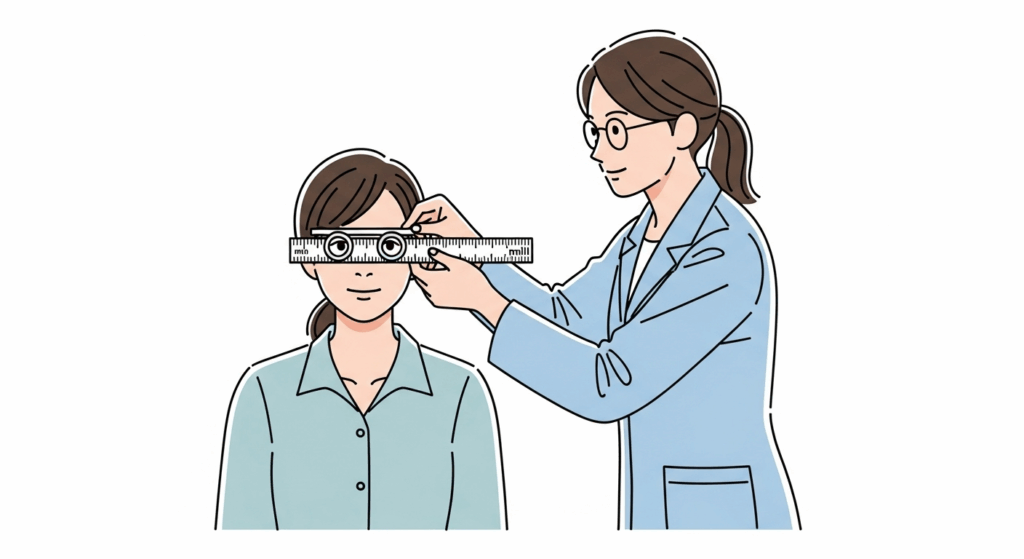
- Sit facing your helper about an arm’s length away.
- Look straight ahead at a distant point (not at the ruler).
- The helper places the ruler across the bridge of your nose and lines up the 0 mm at the center of one pupil.
- They read the mm at the center of the other pupil.
- Repeat and average.
A helper reduces parallax and movement — this is often more accurate than doing it alone.
Method 3 — Photo/selfie with a reference card
- Put a standard-sized card (credit card) against your forehead or hold it next to your nose — the card provides scale (85.6 mm wide).
- Look straight at the camera, keep face relaxed. Take the photo from straight in front (not angled).
- Open the photo on a computer and use image-measuring software (or draw a line and compare to the card width) to calculate PD in millimeters.
This method is handy if you need to send a PD measurement to an online retailer, but it requires careful alignment and a clear frontal shot.
Monocular PD vs. binocular PD — what to measure and when
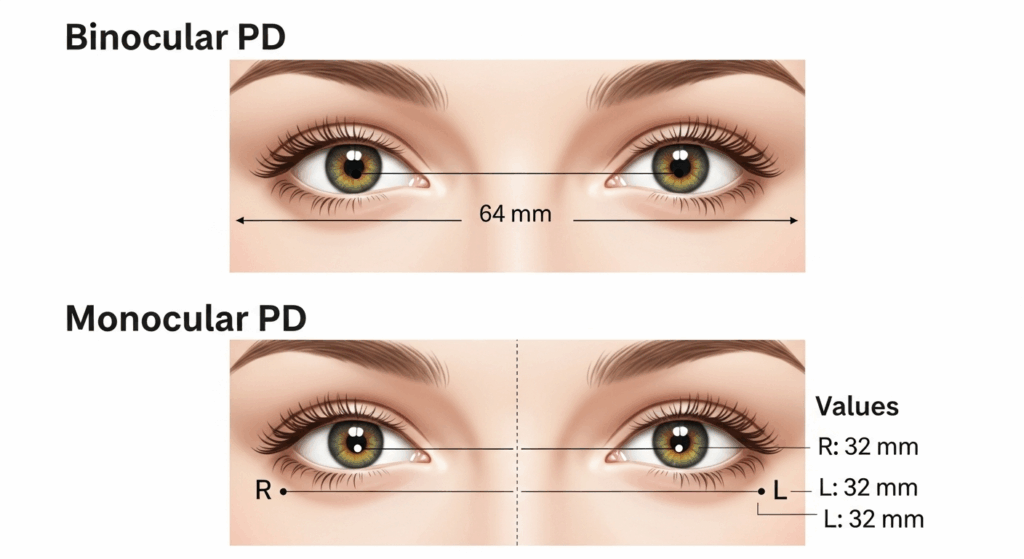
Binocular PD
- One single number: distance between the two pupil centers (e.g., 64 mm).
- Many online retailers accept binocular PD for single-vision glasses.
Monocular PD (right/left)
- Two numbers: distance from the midline (center of the nose) to each pupil, often written as R / L (e.g., 32 / 32).
- Required for progressives, multifocals, and some high-prescription lenses.
How to get them: measure from the middle of the nose bridge (or the center line of a frame) to each pupil with the same methods above, or have an optician provide them.
Quick example (to show the math): if right monocular PD = 32 mm and left monocular PD = 32 mm, binocular PD = 32 + 32 = (30 + 2) + (30 + 2) = 60 + 4 = 64 mm. Do the arithmetic carefully — step-by-step — to avoid tiny but meaningful errors.
Measuring segment height for progressives (briefly)
Segment height is the vertical measurement from the top of the lens (or frame) down to the center of your pupil while wearing the frames. If you’re getting progressive lenses, ask your optician to measure segment height in the exact frames you’ll use. It’s like setting the vertical “zero” for where the progressive zones start — miss that and reading zones can be off.
Common mistakes and how to avoid them
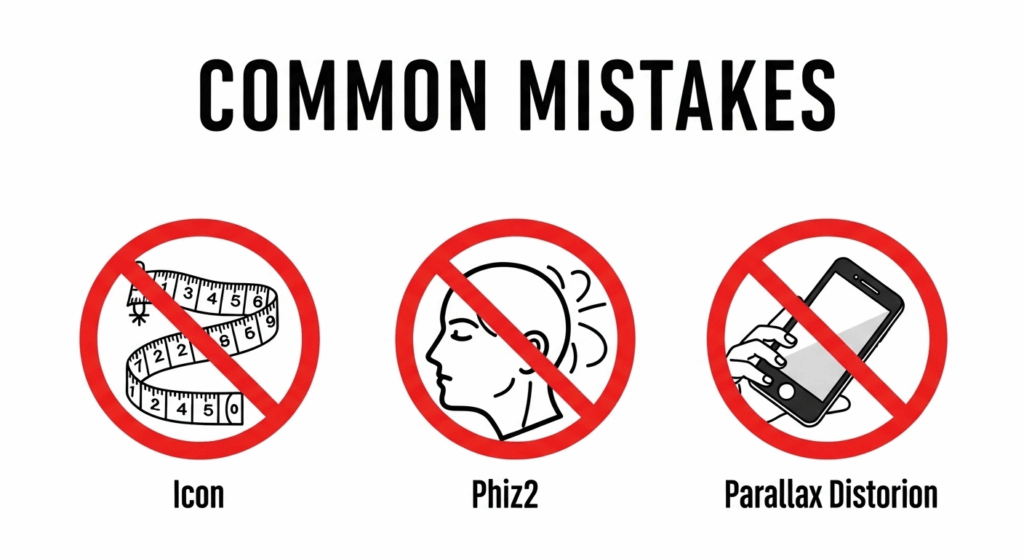
- Relying on a soft measuring tape or elastic ruler — it bends and adds error. Use a rigid mm ruler.
- Measuring from eyebrow or lashline instead of pupil center — you must line up with the pupil.
- Tilting your head or the ruler — keep both level and parallel to the floor.
- Using a poor-quality photo or angled selfie — causes parallax and wrong results.
- Rounding too much — don’t round to the nearest 5 mm. Keep it to the nearest mm.
Remember: a small margin of error (1–2 mm) might be okay for casual sunglasses, but not for progressives or strong prescriptions.
When you should see a professional
We often recommend a professional PD if:
- You’re ordering progressive or bifocal lenses.
- Your prescription is high (strong plus/minus).
- You’ve had strabismus or eye alignment issues.
- You want the most precise fit and comfort.
An optician or optometrist will use a pupillometer and measure monocular PD and segment height accurately.
Quick checklist before you order glasses
- Did you measure PD in millimeters?
- Do you have monocular PD if ordering progressives?
- Did you measure more than once and average?
- Are you using a rigid mm ruler or professional pupillometer?
- If unsure, get a professional measure — it’s worth it.
Conclusion — it’s simple, but precision pays off
Measuring your PD can be done at home with surprising accuracy if you follow the right steps and avoid common traps. Think of PD as the map coordinates for your lenses: accurate coordinates = crisp vision. We often tell patients: if it’s a first try or the glasses are important (progressives, high Rx), invest in a pro measurement. But if you’re ordering basic single-vision glasses, the mirror or helper method + a careful double-check usually does the trick.
